Title : Impact of comorbidity burden on acute NIV outcomes before and after the COVID-19 pandemic: A charlson comorbidity index based analysis
Abstract:
Background: Non Invasive Ventilation (NIV) is widely used in acute hypercapnic respiratory failure across diverse populations. Comorbid conditions as quantified by the Charlson Comorbidity Index (CCI) may influence NIV success and hospital outcomes. This study aims to evaluate patient characteristics, NIV outcomes and the relationship between CCI and mortality in an acute NIV cohort before and after COVID-19.
Methods: We analysed prospectively collected quality data from adults receiving acute NIV at a tertiary centre respiratory support unit during two time periods: Pre- (04/2019-03/2020, n=171) and post- COVID (04/23-03/24, n=141). Demographic, clinical and outcome data were compared between groups. Charlson Comorbidity Index (CCI) was analysed overall and within diagnostic subgroups using chi square test for categorical variables and Kruskal Wallis for the non normally distributed parameters.
Results: Among 312 patients [median age 71 (IQR 61–77); 59.3% female], NIV success was 73.4% and in-hospital mortality 24%. The overall median CCI was 5.0 (3.0–6.0), with a significant increase of 4 (3-6) to 5 (4-7) between the two time periods (p=0.002). Higher CCI was significantly associated with NIV failure (p=0.007) and in hospital mortality (p<0.001). In subgroup analyses, median CCI was higher in the 2nd cohort in COPD patients [5(4-7) vs. 4(3-5), p=0.005] with increased ward based NIV as ceiling of care (83% vs. 66%, p=0.009). In thoracic cage disorders, patients in the 2nd cohort had lower median pH [7.23(7.19-7.26) vs. 7.30(7.26-7.33), p=0.05] and more frequent ward based NIV as ceiling-of-care (88% vs. 0%, p=0.011) with trends toward higher CCI and mortality [5.5(3.5–9.5) vs. 4 (2.5–4), and 50% vs. 0%, respectively, p>0.05 for both]. CCI did not differ significantly across diagnostic sub groups overall (p=0.093).
Conclusions: Higher comorbidity burden, measured by CCI is a strong predictor of NIV failure and in-hospital mortality. Early recognition of patients with elevated CCI enables risk stratification, guides ceiling-of-care decisions and supports individualized management and resource allocation. These findings highlight the importance of integrating comorbidity assessment into acute respiratory care.



